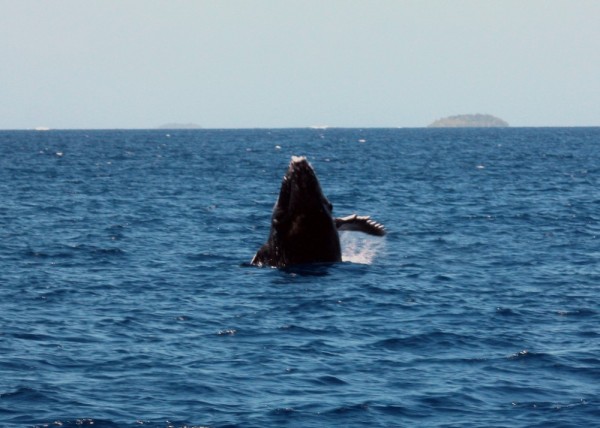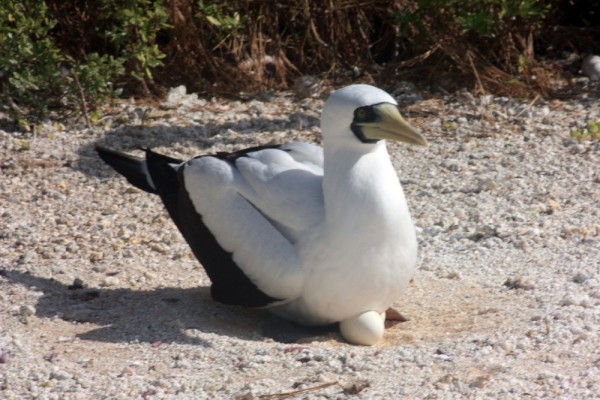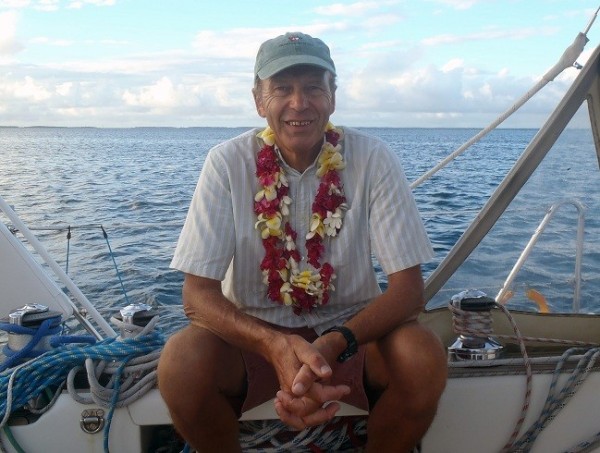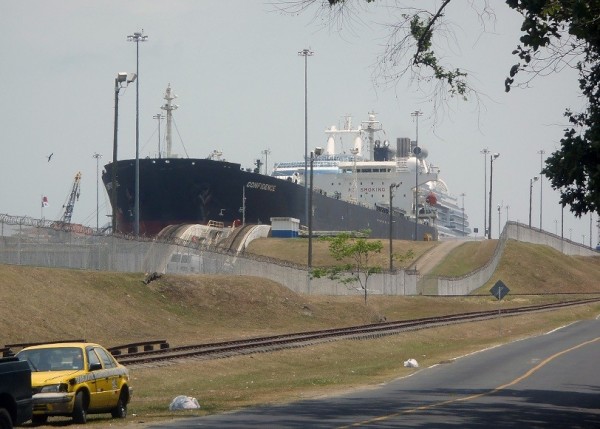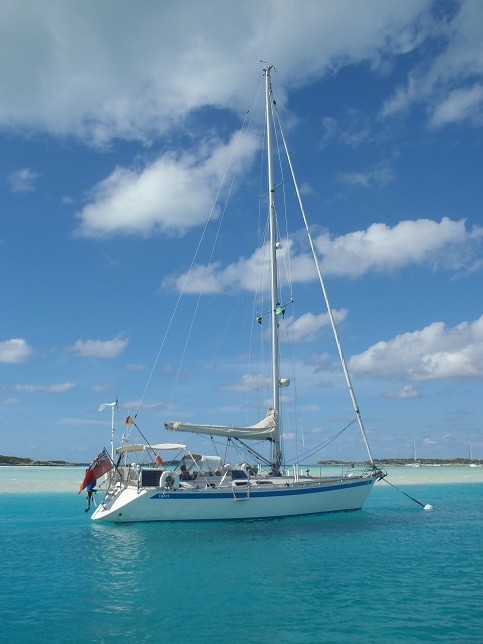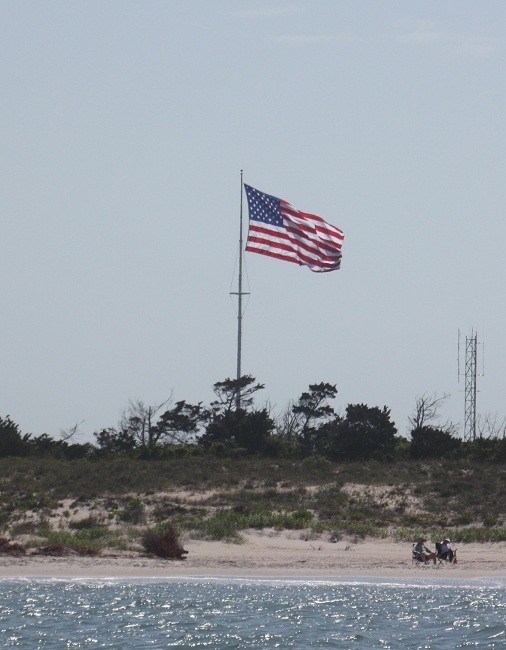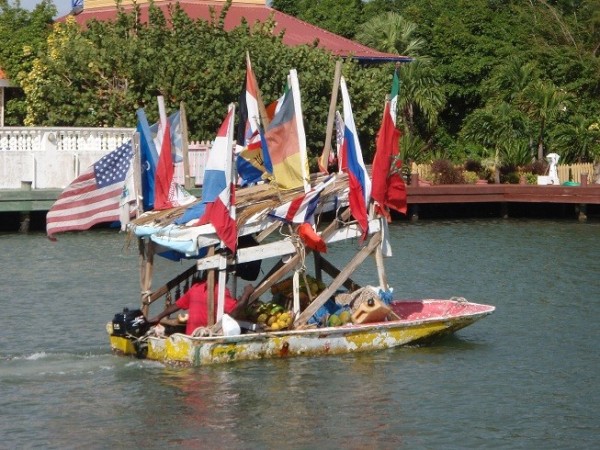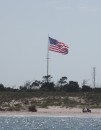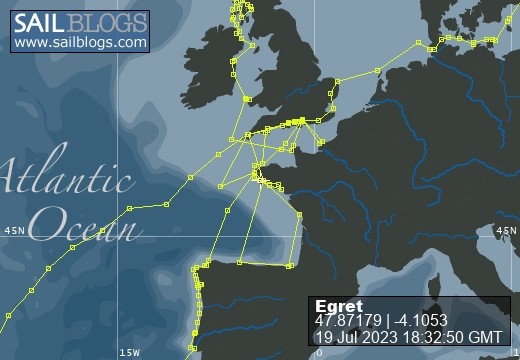
Egret
09 August 2022 | Picture: The Sunk Inner Light Vessel in the Thames Estuary
03 August 2022 | Egret at the Royal Norfolk and Suffolk Yacht Club, Lowestoft
23 July 2022 | Picture: One of the smaller locks at Holtenau
20 July 2022 | Picture: Patrick reminiscing with Juergen at Rostock
11 July 2022 | Picture: Egret at Stralsund, with the barque Gorch Fock beyond
04 July 2022 | Picture: Amanda on Bornholm
01 July 2022 | Picture: Kristianopol, with Egret at far right
26 June 2022 | Ernemar
19 September 2020 | Picture: Egret being lifted out at Ernemar, Sweden
08 September 2020 | Chart: our route from Mem into the Tjust Archipelago
01 September 2020 | Picture: the Carl Johans flight of seven locks
29 August 2020 | Picture: Egret (by G. Einefors)
27 August 2020 | Picture: Egret at Vadstena Castle
25 August 2020 | Picture: Norrkvarn Lock
23 August 2020 | Picture: Egret crossing Lake Vänern
19 August 2020 | Picture: Inside the lowest Trollhatte lock
17 August 2020 | Picture: The Gota Alv Bron in Gothenburg
16 August 2020 | Picture: the GKSS, Langedrag
13 August 2020 | Picture: Egret alongside (left) at Fisketangen
10 August 2019
133. The Return of the Green Turtles
26 April 2015
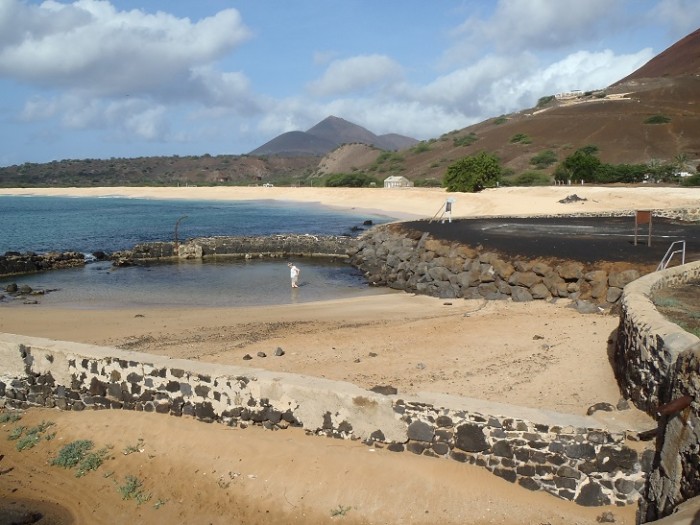
Within a few minutes of shining a torch onto the water at night a baby turtle, about 7cm long, would swim into view, paddling for all it was worth. They instinctively head for light, so as soon as one came close we switched off the torch so as not to distract it from its course out to sea towards the glint of the moon. Witnessing some of the turtles' activities from where we were anchored was certainly some mitigation for not being able watch them close up on the beach. Every now and then during the day, a large turtle's head would pop up, probably one of the males that lurk offshore waiting to impregnate an incoming female. Soon after dark, we could see the red torch-light of spectators on Long Beach watching the turtles drag their huge bulk up the beach to lay their eggs a metre deep in the sand. At around dawn we could see through the binoculars the last half dozen making their way back down the beach to the sea, leaving a trail like tyre tracks behind them. The hatchlings had done well to get as far as us. Each one, with its hundred siblings, has to dig its way out of the sand, scuttle down the beach towards an alien sea, avoid marauding crabs, launch itself into the huge breakers and start swimming towards the horizon. It then has to evade the shoals of black triggerfish that eat more-or-less anything (Dozens of them swam relentlessly round our boat from the moment we arrived, ready to snatch any discarded scraps). Any baby turtles not well clear of the coast by dawn are likely to be gobbled up by patrolling frigate birds. They spend the next decade at sea, only 1 in 1,000 successfully reaching the north-eastern coast of Brazil, 1,250 miles away. There they enjoy thirty years living off the abundant seagrass, growing into adults about 150 cm long and 200kg in weight. Eventually their reproductive instinct takes over, and they swim back to Ascension Island. Whether they find it by chance, trial and error or astonishing navigational abilities isn't exactly known. Between January and May each female lays up to three clutches of eggs, then returns to Brazil for another few years to build up enough stamina to repeat the epic voyage.
It is estimated that 4,000 turtles nest each year on St. Helena's beaches, but they haven't always been such safe nurseries. After the establishment of the garrison in 1817, turtle meat became an important part of the soldiers' diet. Men would watch until the turtles had laid their eggs, then turn them upside down to prevent them returning to the sea. Next morning they attached ropes and towed them behind boats to tidal ponds where they were kept alive. The ponds, which can still be seen, were built in stone at the top of the beach near the town. The turtles were also sold to passing ships to feed their crews, and the biggest were sent alive to distinguished persona in England, where turtle soup was a great delicacy. At its peak, 1,500 turtles were taken in a year, but within 40 years the annual numbers were down to a few hundred. There are some huge shells in the museum which had been used as shields to record the names of commanders of the military bases.
We decided to stay on board "Egret" to do some maintenance jobs on our second day, as the swell had increased enough to make getting ashore even more difficult. I managed to extract the broken hose-tail from the seacock, and found that we had a spare one in bronze with the right thread but the next hose size down. I made an adaptor to fit the existing hose, reasoning that a slight restriction in flow would have an insignificant affect on cooling the engine. Later in the day, we were pleased to hear Joanne from "Calico Jack" on the vhf, and they made it to the anchorage just before dusk. Travis kindly gave us a plastic hose fitting of the correct size, but we decided to try out our metal one first.
We went ashore the following morning, but landing from the dinghy was just as difficult. There were two small cruise ships, the "Plancius" and the "Ortelius", both only 90m long, visiting that day. The passengers looked extremely apprehensive about clambering ashore from their big RIBs. We spoke to the resident geologist from the "Ortelius", which was en route from Antarctica, who was very excited about studying the volcanic formations on Ascension. When the time came to head back, we climbed into the dinghy with our water cans but found that its anchor had snagged under a rock. We emptied one of the cans and tied it to the warp to mark the anchor, hoping we could retrieve it later, and reported the incident to Kitty by vhf. It was a horrible night on board "Egret", as the wind had got up along with the swell. The downdrafts were throwing the boat one way then the other, causing the anchor chain to snatch violently at irregular intervals.
Kitty had told us that, because the RMS "St. Helena" would be visiting next day, they would be running a passenger launch which would also provide a limited ferry service for the yachts. This was a huge relief, and when the ferry came alongside "Egret" next morning the coxswain handed us our lost anchor, tackle and water can. Thank you, Kitty and your crew! When we reached the shore, we watched the barge which transferred cargo for the RMS being loaded and unloaded by the mobile crane on the quay, an operation made even trickier than at St. Helena by the higher swell and the shorter quay. The Royal Fleet Auxiliary Ship "Gold Rover" also made a brief visit on her way to the Falkland Islands, making it a very busy day for the dockyard. We planned to leave at the weekend and asked if we could clear out of the country that day, just in case we couldn't get ashore again, a request to which Kitty and the police fortunately agreed.
A catamaran, ironically called "Swell", had arrived next to "Egret" for a brief visit to top up with water during a delivery trip from Cape Town to Israel. When they tried to leave the next morning they couldn't get her anchor up. The owner dived down with SCUBA gear to see if he could clear it, but came up suffering from breathing difficulties. The crew called Ascension Radio for help, and within a few minutes the dockside crane lowered an orange RIB complete with crew into the sea, and they whisked him to shore where he was transferred to the hospital. He presumably made a good recovery as he was back on board next morning, but their anchor was still stuck on the seabed.
This episode made us even more concerned about our own anchor as the chain continued to snatch, we suspected because it was snagging on a seabed obstruction. After another uncomfortable night we decided to leave as soon as we could get ready, and asked Kitty by vhf to cancel our hire car. Fortunately our anchor came up without a problem, and we sailed away relieved, but very disappointed that we hadn't been able to see more of the island. We had hoped, for instance, to explore the network of paths on Green Mountain. We might have seen the land crabs that live in the moist conditions of the highlands and travel annually down to the desert conditions below to reach the beaches where they mate and lay their eggs. And then there are the "Wideawake Fairs" - the local name for the huge colonies of sooty terns. We bade farewell to Travis and Joanne, who were heading to Brazil on their way home to Key West. We later heard from Travis, a professional diver, that he went down to look at "Swell's" anchor and found it to be caught under an old pipe, so he attached a tripping line to aid retrieval. He said there were lots of boulders on the sea bed, which is probably what had caught the catenary of our own chain. It would be a big incentive for yachts to visit if the harbour could offer moorings and a ferry service, because Ascension Island is too much of a intriguing place to miss.
It is estimated that 4,000 turtles nest each year on St. Helena's beaches, but they haven't always been such safe nurseries. After the establishment of the garrison in 1817, turtle meat became an important part of the soldiers' diet. Men would watch until the turtles had laid their eggs, then turn them upside down to prevent them returning to the sea. Next morning they attached ropes and towed them behind boats to tidal ponds where they were kept alive. The ponds, which can still be seen, were built in stone at the top of the beach near the town. The turtles were also sold to passing ships to feed their crews, and the biggest were sent alive to distinguished persona in England, where turtle soup was a great delicacy. At its peak, 1,500 turtles were taken in a year, but within 40 years the annual numbers were down to a few hundred. There are some huge shells in the museum which had been used as shields to record the names of commanders of the military bases.
We decided to stay on board "Egret" to do some maintenance jobs on our second day, as the swell had increased enough to make getting ashore even more difficult. I managed to extract the broken hose-tail from the seacock, and found that we had a spare one in bronze with the right thread but the next hose size down. I made an adaptor to fit the existing hose, reasoning that a slight restriction in flow would have an insignificant affect on cooling the engine. Later in the day, we were pleased to hear Joanne from "Calico Jack" on the vhf, and they made it to the anchorage just before dusk. Travis kindly gave us a plastic hose fitting of the correct size, but we decided to try out our metal one first.
We went ashore the following morning, but landing from the dinghy was just as difficult. There were two small cruise ships, the "Plancius" and the "Ortelius", both only 90m long, visiting that day. The passengers looked extremely apprehensive about clambering ashore from their big RIBs. We spoke to the resident geologist from the "Ortelius", which was en route from Antarctica, who was very excited about studying the volcanic formations on Ascension. When the time came to head back, we climbed into the dinghy with our water cans but found that its anchor had snagged under a rock. We emptied one of the cans and tied it to the warp to mark the anchor, hoping we could retrieve it later, and reported the incident to Kitty by vhf. It was a horrible night on board "Egret", as the wind had got up along with the swell. The downdrafts were throwing the boat one way then the other, causing the anchor chain to snatch violently at irregular intervals.
Kitty had told us that, because the RMS "St. Helena" would be visiting next day, they would be running a passenger launch which would also provide a limited ferry service for the yachts. This was a huge relief, and when the ferry came alongside "Egret" next morning the coxswain handed us our lost anchor, tackle and water can. Thank you, Kitty and your crew! When we reached the shore, we watched the barge which transferred cargo for the RMS being loaded and unloaded by the mobile crane on the quay, an operation made even trickier than at St. Helena by the higher swell and the shorter quay. The Royal Fleet Auxiliary Ship "Gold Rover" also made a brief visit on her way to the Falkland Islands, making it a very busy day for the dockyard. We planned to leave at the weekend and asked if we could clear out of the country that day, just in case we couldn't get ashore again, a request to which Kitty and the police fortunately agreed.
A catamaran, ironically called "Swell", had arrived next to "Egret" for a brief visit to top up with water during a delivery trip from Cape Town to Israel. When they tried to leave the next morning they couldn't get her anchor up. The owner dived down with SCUBA gear to see if he could clear it, but came up suffering from breathing difficulties. The crew called Ascension Radio for help, and within a few minutes the dockside crane lowered an orange RIB complete with crew into the sea, and they whisked him to shore where he was transferred to the hospital. He presumably made a good recovery as he was back on board next morning, but their anchor was still stuck on the seabed.
This episode made us even more concerned about our own anchor as the chain continued to snatch, we suspected because it was snagging on a seabed obstruction. After another uncomfortable night we decided to leave as soon as we could get ready, and asked Kitty by vhf to cancel our hire car. Fortunately our anchor came up without a problem, and we sailed away relieved, but very disappointed that we hadn't been able to see more of the island. We had hoped, for instance, to explore the network of paths on Green Mountain. We might have seen the land crabs that live in the moist conditions of the highlands and travel annually down to the desert conditions below to reach the beaches where they mate and lay their eggs. And then there are the "Wideawake Fairs" - the local name for the huge colonies of sooty terns. We bade farewell to Travis and Joanne, who were heading to Brazil on their way home to Key West. We later heard from Travis, a professional diver, that he went down to look at "Swell's" anchor and found it to be caught under an old pipe, so he attached a tripping line to aid retrieval. He said there were lots of boulders on the sea bed, which is probably what had caught the catenary of our own chain. It would be a big incentive for yachts to visit if the harbour could offer moorings and a ferry service, because Ascension Island is too much of a intriguing place to miss.
Comments
| Vessel Name: | Egret |
| Vessel Make/Model: | Sweden Yachts 390 |
| Hailing Port: | Chichester Harbour |
| Crew: | Patrick & Amanda Marshall |
Egret's Photos - Main
R.jpg) |
The Gota River, Trollhatte Canal, Lakes Vanern & Vattern and the Gota Canal
2 Photos | 9 Sub-Albums
Created 30 September 2020
|
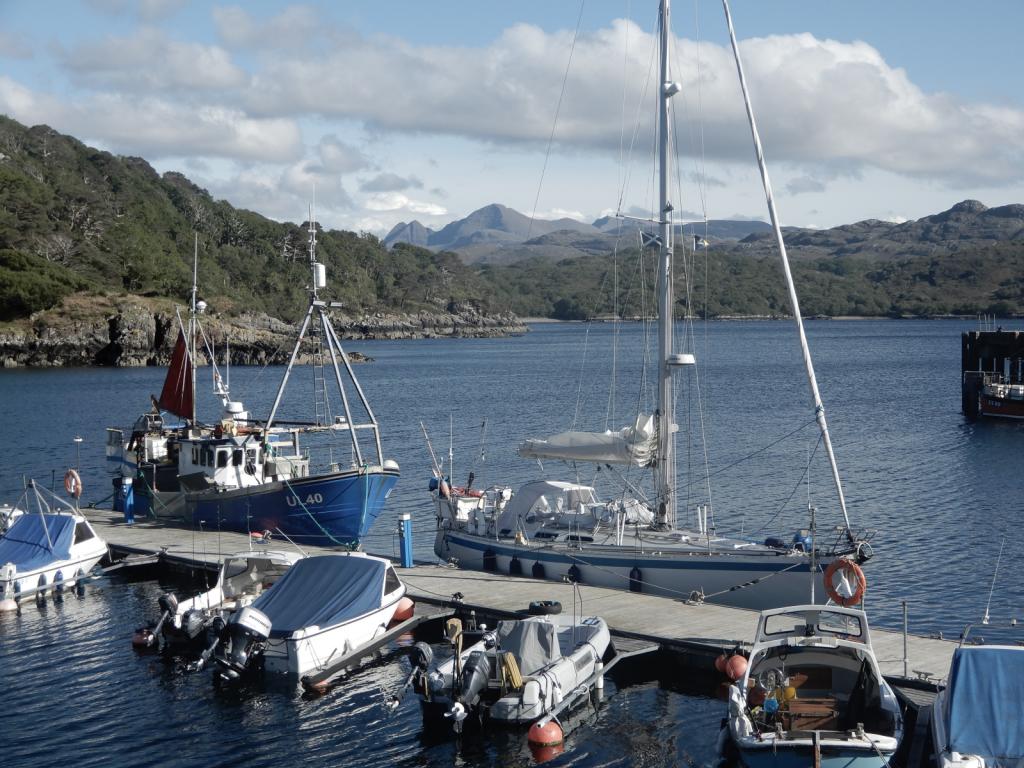 |
The Inner and Outer Hebrides, Orkney, Fair Isle, Shetland, Norway and Sweden's west coast.
1 Photo
Created 14 November 2019
|
|
Normandy, Scilly, Pembrokeshire, Ireland, Isle of Man, Northern Ireland, Inner Hebrides and the Crinan Canal.
1 Photo
Created 14 November 2018
|
Egret
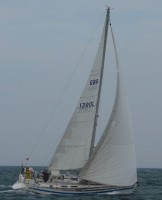
Who: Patrick & Amanda Marshall
Port: Chichester Harbour

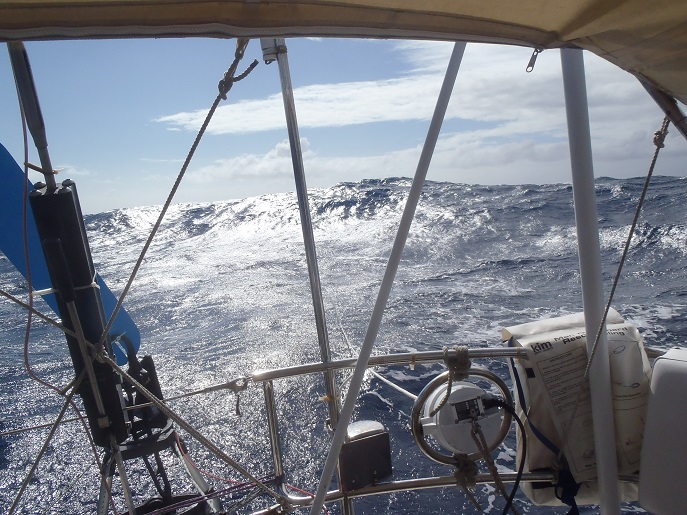
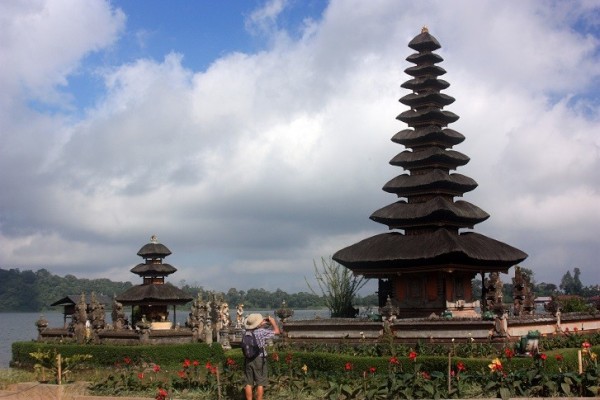
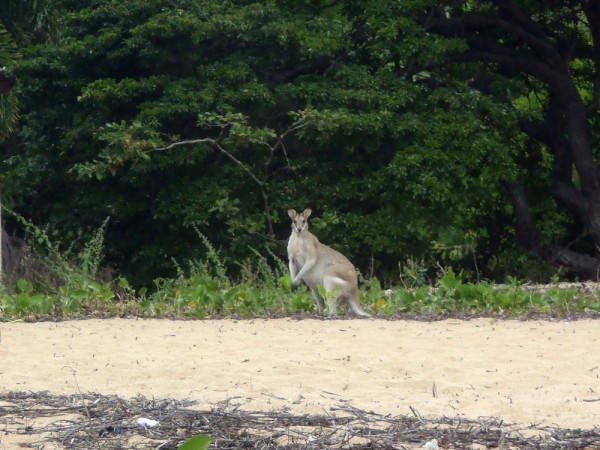
, Pentecost, Naghol (Land diving)a.jpg)
Amanda raising the Quarantine & New Zealand courtesy flagedit_edited-1 a.jpg)
